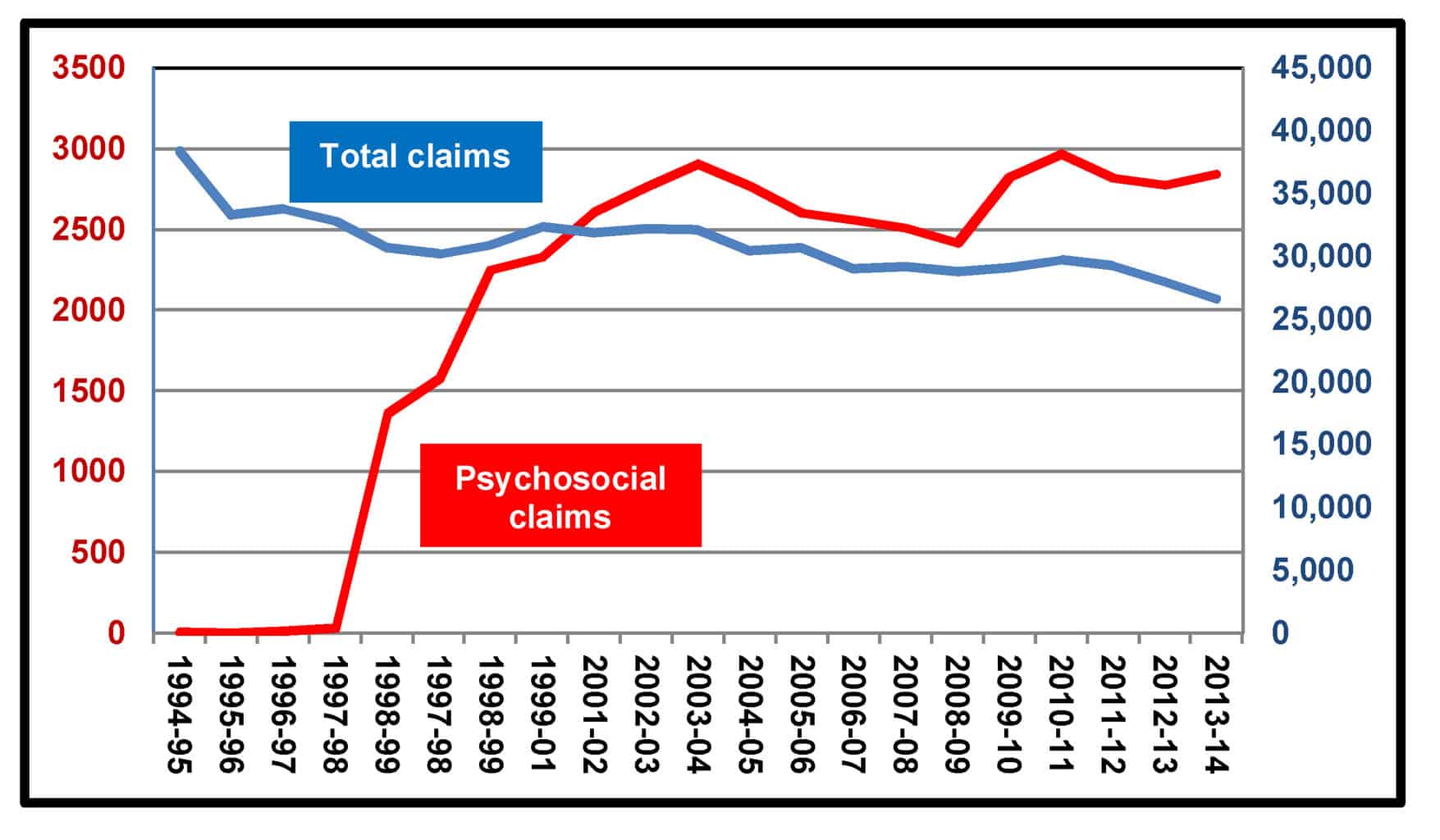In some of his research into the operations of WorkSafe Victoria, OHSIntros provided this graph of workers compensation claims for psychosocial issues. Not only does it show the extent of the issue in recent years, it provides a clear historic starting point for the hazard – a hazard that has created an industry of its own and that has complicated the management of workplace safety.

OHSIntros comments on this increase by saying “the conventional rationale in OHS is that when you identify and focus on a risk, the claims flood in…” but significantly states that this logic remains untested. Occupational health and safety (OHS) seems to run on untested logic.
Clearly psychosocial issues in the workplace present a problem. OHSIntros writes that in 2013-14 psychosocial claims overtook manual handling on average cost amounts of A$88,000 to A$67,000, respectively (page 11)
Recently
